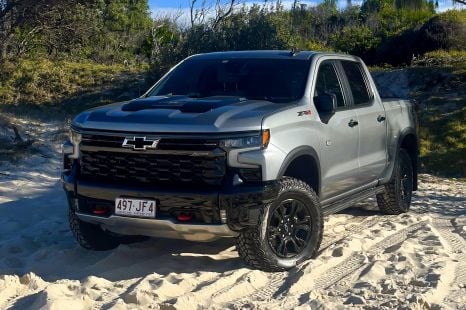

William Stopford
2025 Chevrolet Silverado ZR2 review
1 Month Ago
The Volkswagen Amarok remains an impressive ute even with the less powerful bi-turbo diesel four-cylinder engine.
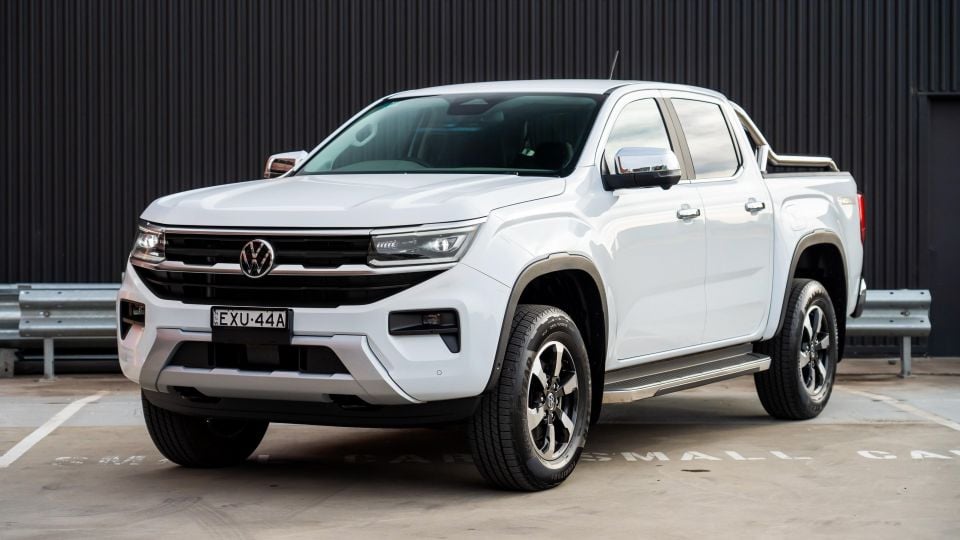
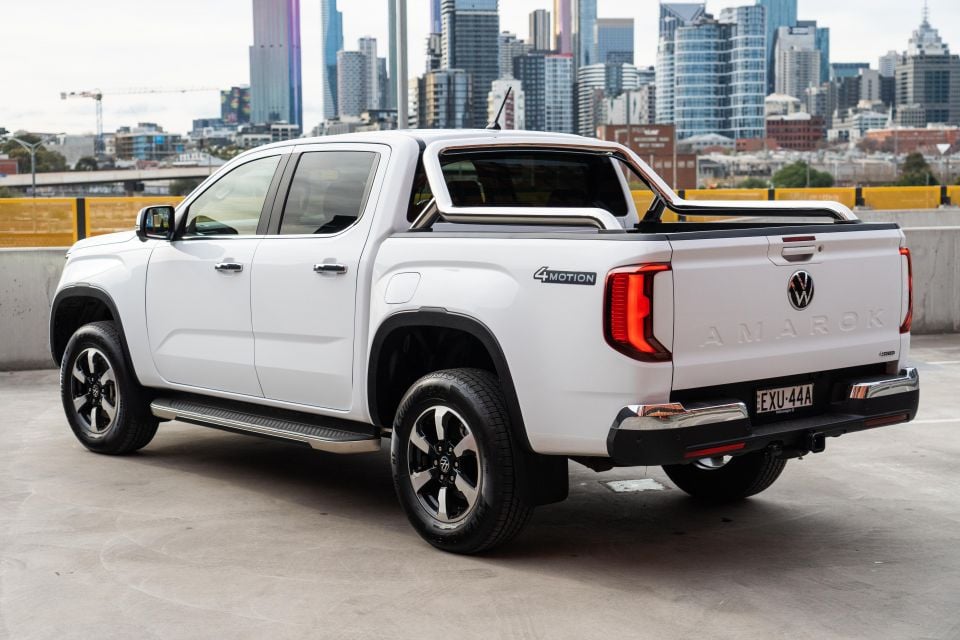

Quickly see how this car stacks up against its competition. Select any benchmark to see more details.
Where expert car reviews meet expert car buying – CarExpert gives you trusted advice, personalised service and real savings on your next new car.
The first-generation Volkswagen Amarok was consistently more popular as a turbo-diesel V6, and that hasn’t changed with the new generation that arrived here in 2023.

Volkswagen Australia introduced the second-generation model – closely related to the Ford Ranger – with not only a new V6, but also single- and bi-turbo diesel fours and a turbo-petrol four.
Despite a wide range of engines, however, the V6 is still accounting for around 70 per cent of sales.
The mid-range Style trim, available with either the bi-turbo four or V6 diesels, is accounting for around half of all Amarok sales, and we’ve put it to the test with the less popular four to see if it’s really worth ponying up the extra money for the larger engine.
Regardless of what’s under the bonnet, the Amarok is a classy-looking ute, inside and out. Where the Ranger has clear design links with the F-150, the Amarok’s crisp lines give it a familial resemblance to Volkswagen’s passenger cars – well, perhaps not the brand’s most recent, more curvaceous models.
The Style is a little less fleet-spec in appearance than the cheaper Core and Life variants with its 18-inch alloy wheels and stainless steel sports bar, and goes up against the likes of the mid-range Ford Ranger Sport and top-spec Isuzu D-Max X-Terrain.
The Amarok TDI500 Style is now priced from $69,740 before on-road costs, or $4000 cheaper than the TDI600 Style which features the V6 – $2750 more than the MY23 range, which is now in runout with drive-away offers.
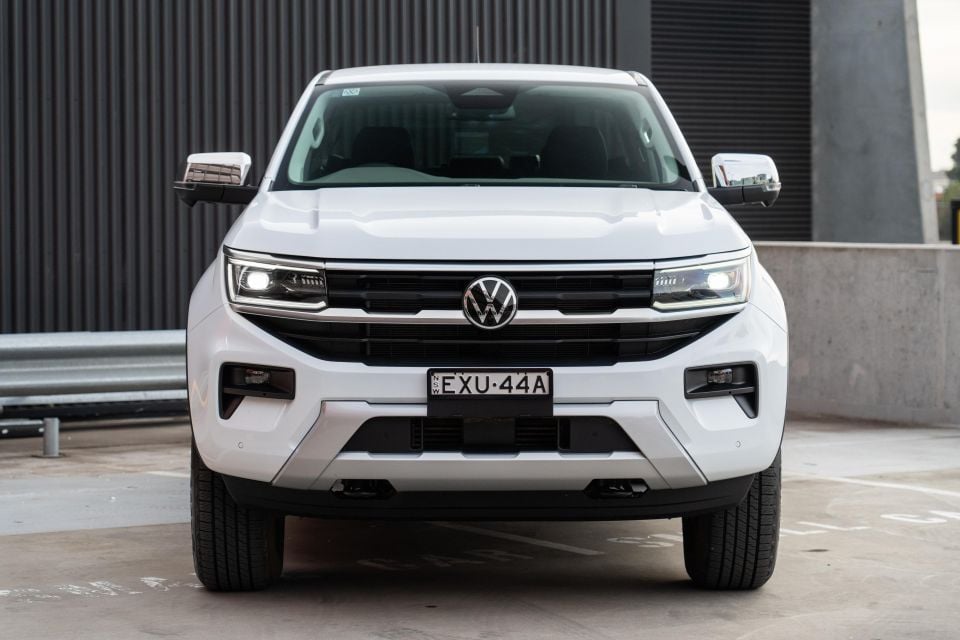
Until March 31, 2024, you can get the MY23 Volkswagen Amarok TDI500 Style for $68,990 drive-away, representing thousands in savings over a new MY24 order. The only spec change is it receives a trailer brake controller as standard, which complements the standard tow bar and range-wide 3.5-tonne braked towing capacity.
That puts it up against the aforementioned D-Max X-Terrain ($67,500), Mazda BT-50 SP ($68,510) and Ranger Sport ($65,890), the latter of which uses the same engine. You can, however, get a Ranger XLT with the turbo-diesel V6 for $67,590 before on-roads. Tempting…
2024 Volkswagen Amarok pricing:
Prices exclude on-road costs
Volkswagen has given the Amarok a more attractive interior than its Ranger cousin, but usability has suffered in the process.
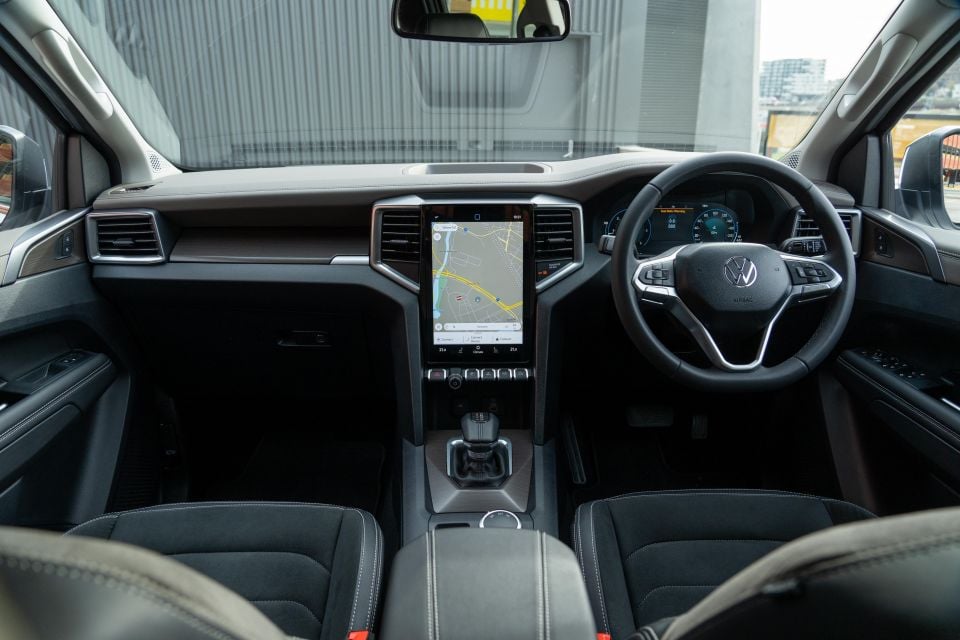
There are no cupholders on either side of the dash as can be found in the Ranger, for example, while those in the centre console are awkwardly sized and placed and a nuisance to use. Gone, too, is the Ranger’s clever slot that can fit a McDonald’s fries container.
The Ranger cleverly has both climate controls on the touchscreen plus physical buttons and knobs just beneath it, but Volkswagen has discarded the latter for a row of less useful toggle switches.
Finally, the Ranger’s clever bumper side step at the rear, which allows for easier access to the tub, doesn’t exist on the Amarok.
The design is more upscale in the Amarok, however; with a crisp, angular design, an attractive two-tone brown/black colourway, subtle ambient lighting, metal-look highlight trim, and a soft-touch dash top.
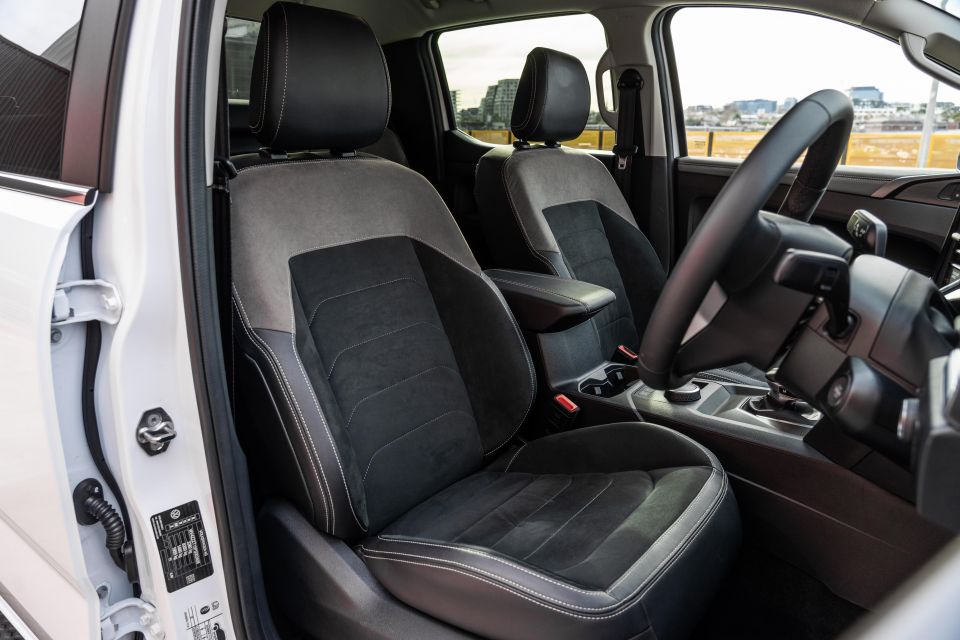
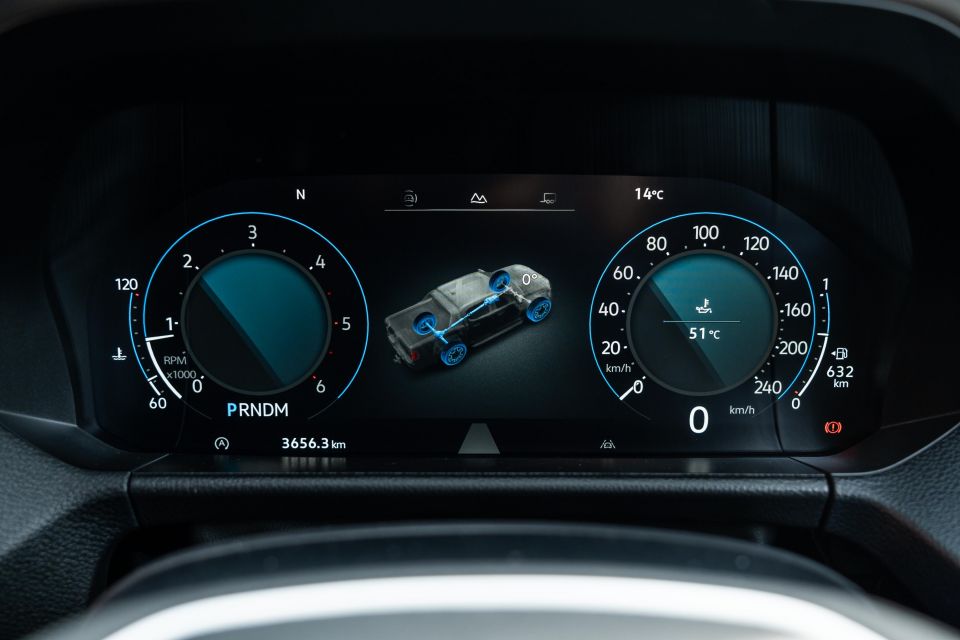
Add some more soft-touch surfaces to, for example, the sides of the centre console and this interior would look entirely appropriate in a circa-$70,000 SUV; soft-touch trim doesn’t seem to be as high a priority in utes at this price point.
The steering wheel is a classic Volkswagen item, which feels nice and has logically designed and placed switchgear.
Volkswagen has taken the Ranger’s in-car technology but given it its own look, which makes the Amarok blend in more neatly with other models from the brand. Just don’t go expecting a Digital Cockpit with full-screen map views in the instrument cluster.
While that would be a nice inclusion, the interfaces are attractive and easy to navigate. The touchscreen is responsive, and we had no issues with wireless Android Auto dropping out.
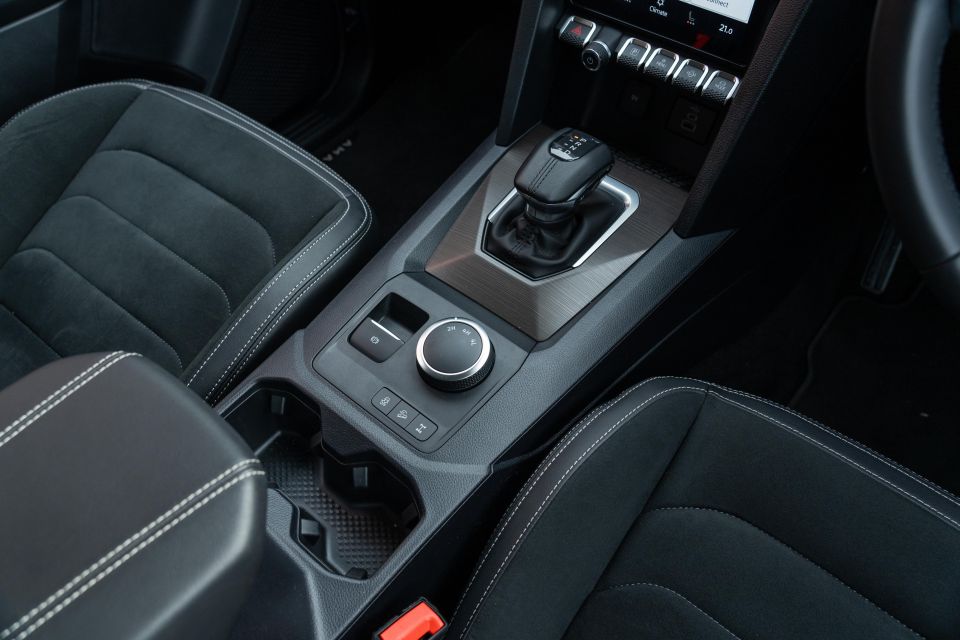
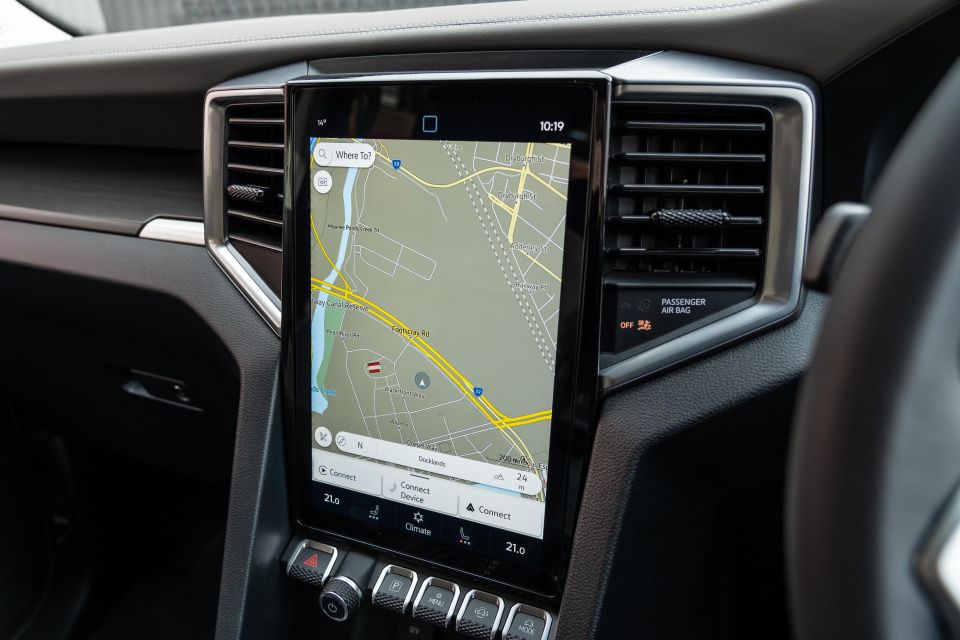
Not only that, the wireless phone charger was remarkably reliable too, and you can easily see your phone. This is particularly noteworthy as, in my experience, wireless phone chargers are constantly dropping out of charge mode, and many fail to hold your phone in place securely.
The Amarok also has the same camera technology as the Ranger, which means crisp, high-resolution views that are among the best in the segment.
We just wish there were redundant, physical climate controls like in the Ranger. The shortcuts on the screen are always viewable, while a physical toggle switch will take you to a screen displaying some of the climate functions, but this setup isn’t as intuitive.
While the Ranger offers FordPass connectivity, allowing you to do things like remotely unlock and start the vehicle or check the trailer lights using a smartphone app, there’s no corresponding app for the Amarok.
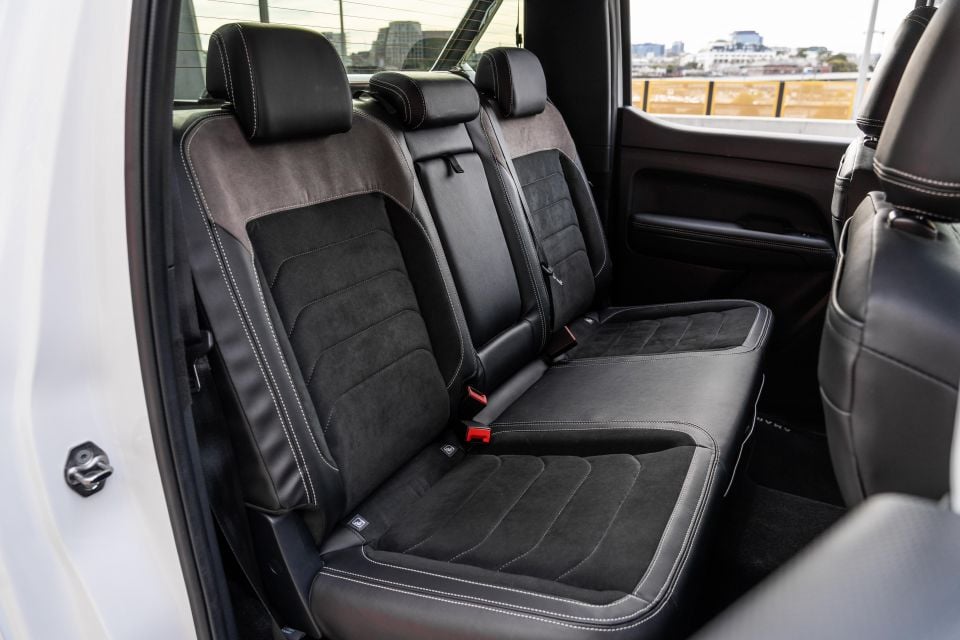
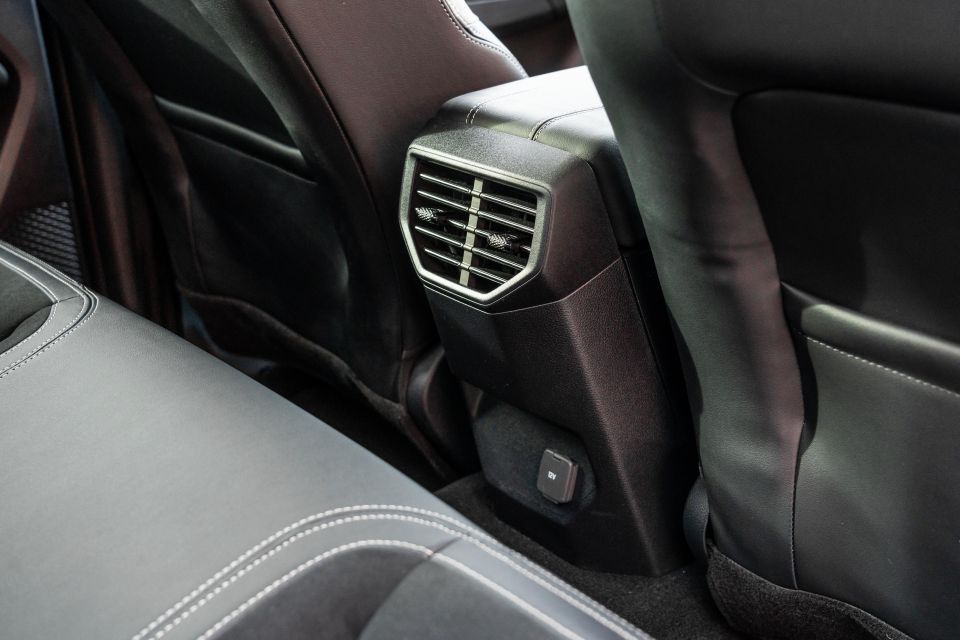
Storage is average, with door-mounted bottle holders a bit awkwardly sized, a centre console bin that could be larger, and a second glove box that doesn’t really add much.
The front seats are comfortable, with a good amount of bolstering to keep you in place. Even on some long drives, I never felt uncomfortable though one passenger said they could be slightly wider.
Step into the back and there’s sufficient room in every direction. A carload of us, measuring between 172 and 182cm tall, went on a long road trip and there were no complaints about rear seat comfort.
There’s plenty of knee room back there, too, with the seatbacks scooped out to maximise space.
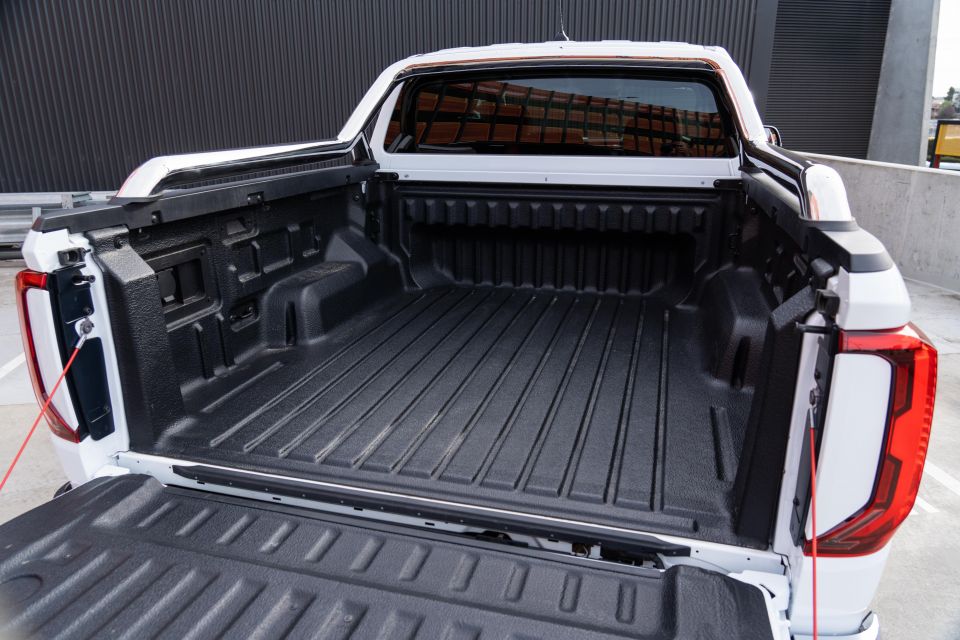

Like many utes, there are two ISOFIX and two top-tether anchor points for child seats. While there are air vents, a fold-down centre armrest and a 12V outlet, there’s disappointingly no USB outlets back here.
The lined tub is illuminated, and there are six logically located tie-down points plus a 12V outlet. As with the first-generation Amarok, you can fit a Euro pallet between the wheel arches. The tub measures 1544mm long and 1224mm wide.
The Amarok TDI500 Style is powered by a 2.0-litre bi-turbo four-cylinder diesel with 154kW of power and 500Nm of torque.
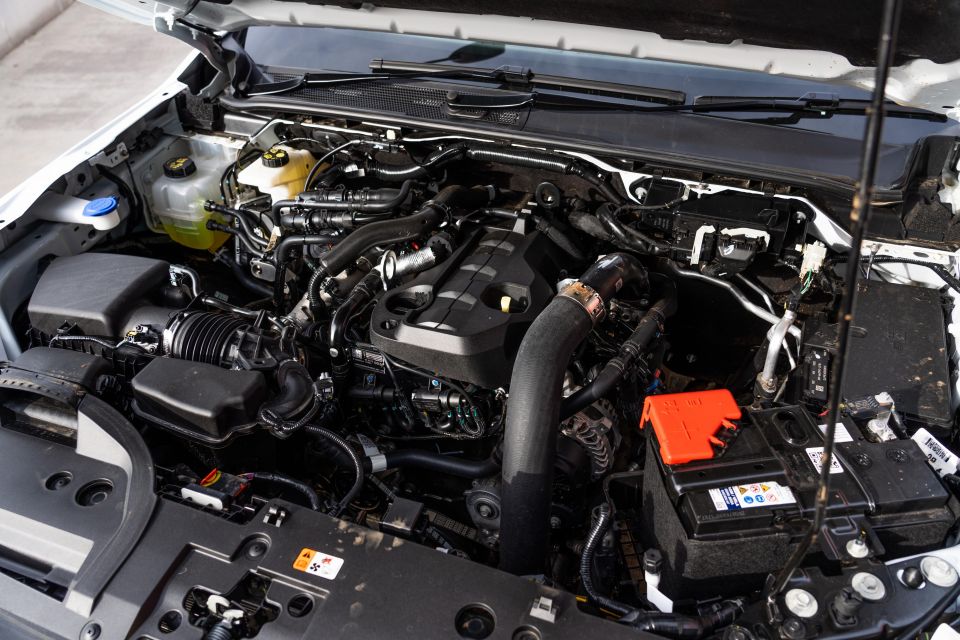
It’s mated with a 10-speed automatic transmission and a part-time four-wheel drive system with selectable low- and high-range gearing. Opting for the V6 brings an extra 30kW and 100Nm, plus a full-time four-wheel drive system.
Over the course of a week with the Amarok, with plenty of highway driving courtesy of a trip up to Victoria’s High Country, we averaged 8.2L/100km. The official combined cycle claim is 7.2L/100km, 1.2L/100km less than the V6.
Payload is 1009kg, gross vehicle mass is 3280kg, and unbraked and braked towing capacity figures are 750kg and 3500kg, respectively.
Wading depth is 800mm, ground clearance is 235mm, and approach, departure and breakover angles are 30, 25.6 and 22 degrees, respectively.
The turbo-diesel V6 and turbo-petrol four-cylinder engines available in more expensive Amaroks are crackers, but don’t go thinking the four-cylinder oiler is a poor relation.
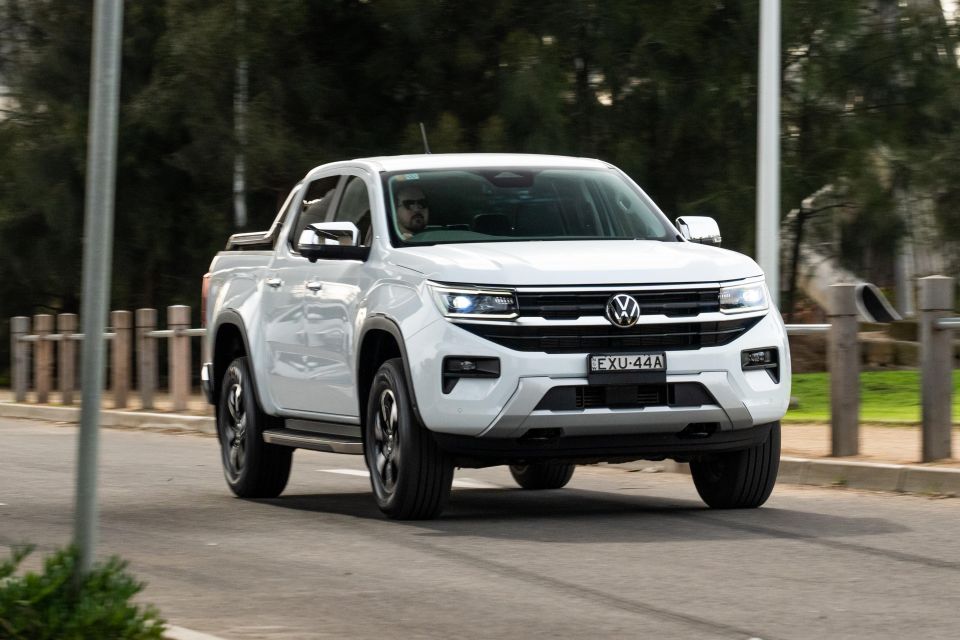
It might be less powerful, but there’s still plenty of grunt on tap, sent through a smooth-shifting transmission.
You’ll rarely feel the need to shift gears manually, but if you do you may bemoan the absence of paddle shifters. Instead, gears are shifted via awkward plus/minus buttons on the side of the shifter, which aren’t as pleasant to use – particularly when you’re driving in the mountains.
The Amarok approaches SUV levels of ride comfort, which is impressive for a dual-cab ute riding on rear leaf springs.
It feels more settled with people in the back or a load in the tub, sure, but the rear doesn’t skip around as much as other utes when unladen and impacts are absorbed nicely. The Amarok feels planted, with good body control.
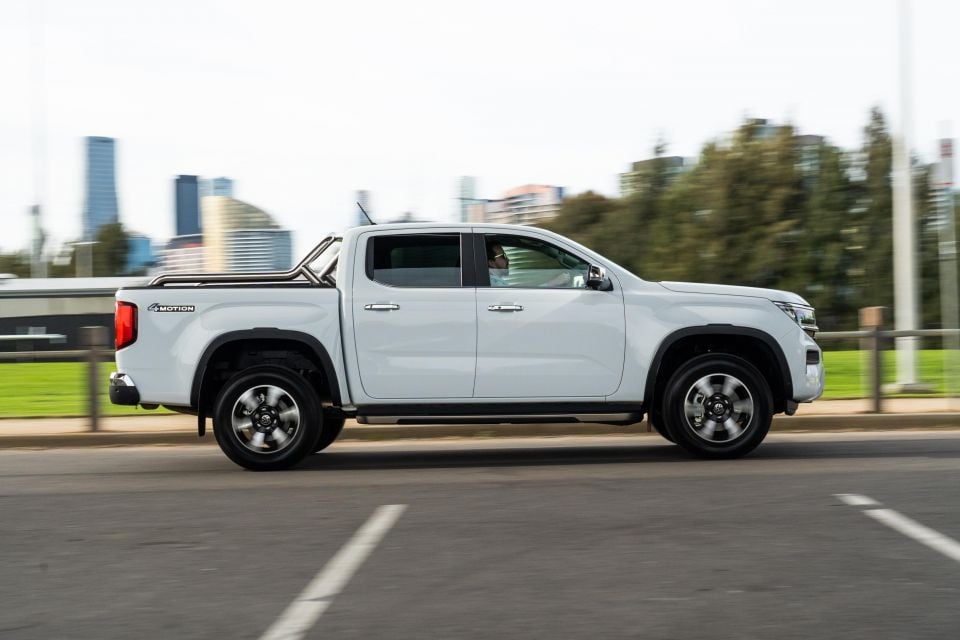
The steering also feels decidedly un-ute-like, being nice and progressive with a meaty weighting. The Amarok is confidence-inspiring to pilot, though in tighter turns there’s no getting around how long and tall the vehicle is.
Turbo-diesel engines can make a racket, but refinement in the Amarok is impressive with little diesel rattle, a smoothly calibrated automatic stop/start system, and overall levels of noise, vibration and harshness more akin to an SUV than a ute.
It’s also particularly quiet at highway speeds, with virtually no wind noise, and tyre roar is kept to a minimum even on coarse-chip surfaces.
The Amarok shines on the highway thanks to its well-calibrated suite of driver assist aids, including its adaptive cruise control and lane-keep assist.

The traffic sign recognition system proved to be one of the most accurate I’ve experienced, never misreading signs and even displaying an ‘!’ if it’s a time-specific speed limit, and the speed limit assist system allows you to easily change the vehicle speed.
Volkswagen has also included a speed limiter function in addition to the adaptive cruise control.
When the sun goes down, it’s the matrix LED headlights’ time to shine. Illumination is crisp and bright, with high-beam functionality that doesn’t dazzle oncoming motorists – ideal, given how many times we’ve probably all been blinded by utes with their high-beams on.
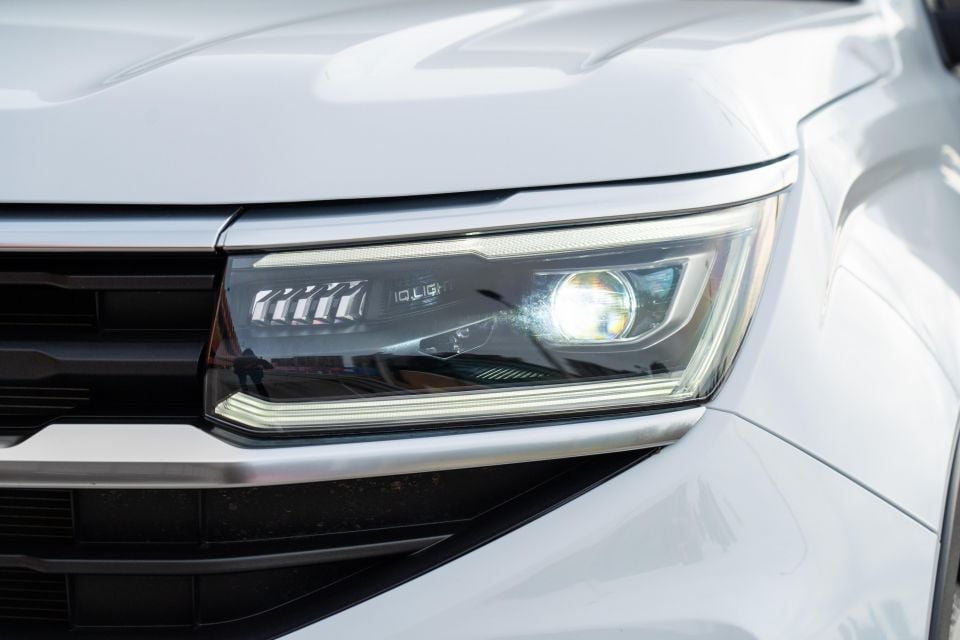

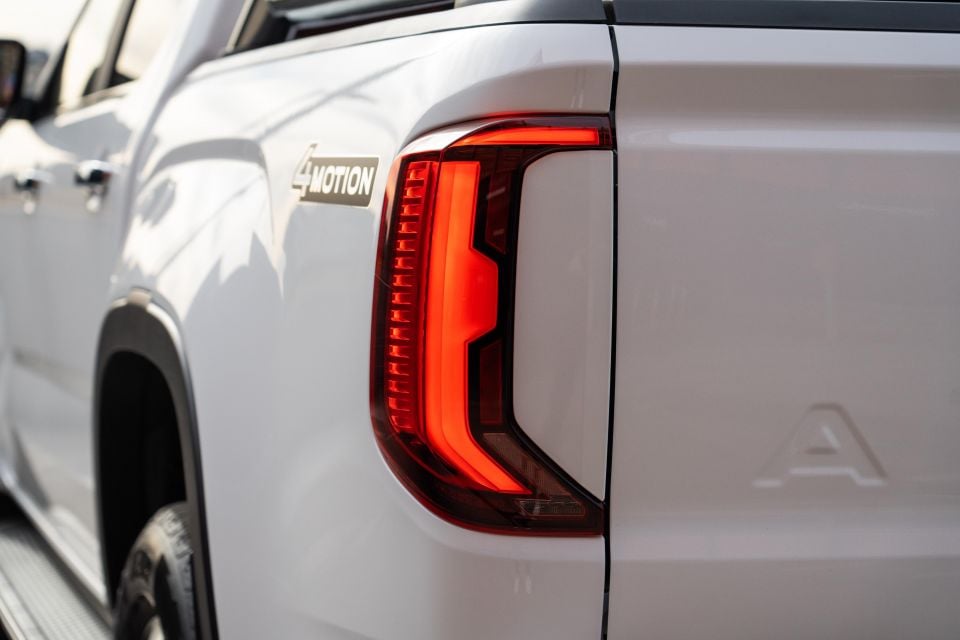
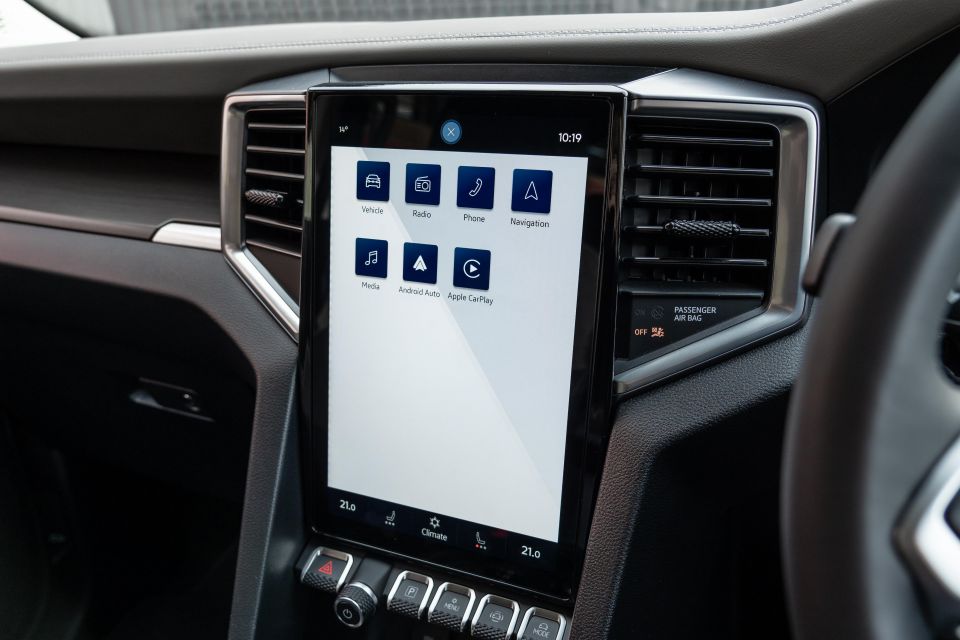
Amarok Core highlights:
Exterior
Interior
Amarok Life adds:
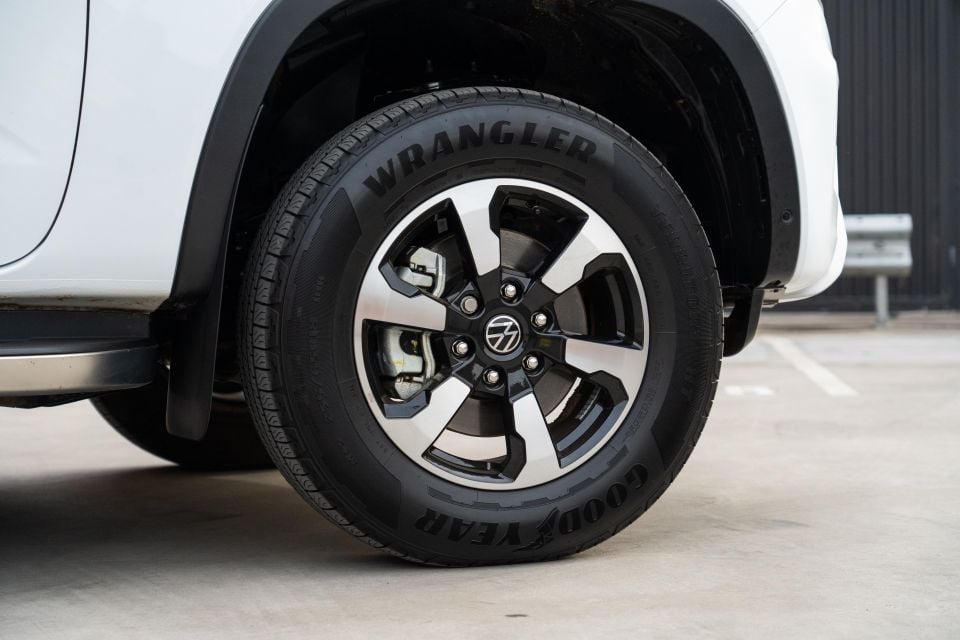

Where expert car reviews meet expert car buying – CarExpert gives you trusted advice, personalised service and real savings on your next new car.
Amarok Style adds:
The pricier Aventura and Panamericana bring additional equipment, including leather upholstery and a Harman Kardon sound system.
The Volkswagen Amarok was awarded a five-star ANCAP safety rating against the 2020-2022 testing protocols.
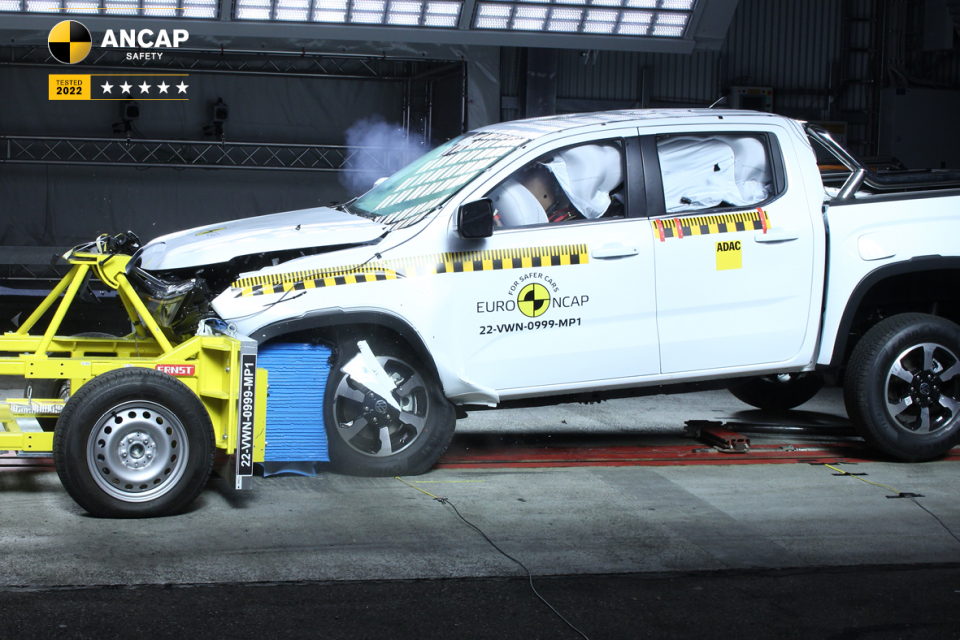
This result was drawn from testing of the closely related Ford Ranger, with additional frontal offset and side impact tests conducted on the Amarok by Euro NCAP, which has harmonised testing protocols with ANCAP.
The Amarok scored 86 per cent for adult occupant protection, 93 per cent for child occupant protection, 74 per cent for vulnerable road user protection, and 83 per cent for safety assist.
Standard safety equipment includes:
Amarok Life adds:
Amarok Style adds:
The Amarok is backed by a five-year, unlimited-kilometre warranty.
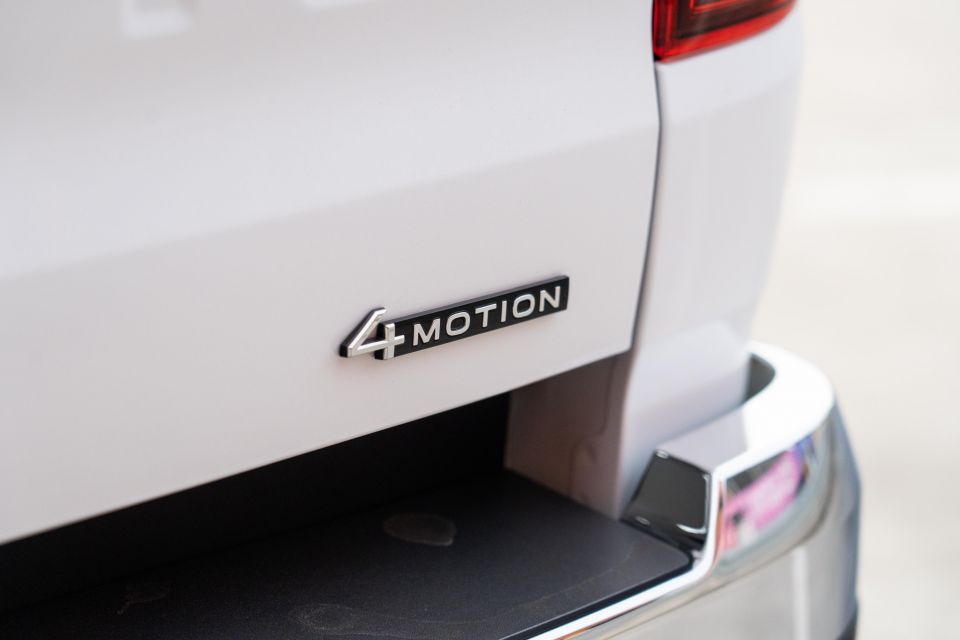
Volkswagen offers five years of capped-price servicing, with intervals of 12 months or 15,000km. These services are priced at $329, $329, $414, $329 and $400, respectively.
Ford offers only four years of capped-price servicing, and each of these are capped at $379 for MY24 vehicles. They were previously capped at $329.
We may enjoy the turbo-petrol and the V6 turbo-diesel engines available in the Amarok, but the bi-turbo four is hardly a poor relation.

It’s thriftier than both, yet still has plenty of grunt and refinement. All the other Amarok’s strong suits also remain present, including attractive styling inside and out, a comfortable ride, nicely tuned steering, and class-competitive towing and hauling capability.
The Amarok isn’t cheap, and the Ranger has the more usable interior, but its refined appearance and demeanour make it one of the most desirable utes in its segment.
Click the images for the full gallery
BUY: Volkswagen Amarok MORE: Everything Volkswagen Amarok
Where expert car reviews meet expert car buying – CarExpert gives you trusted advice, personalised service and real savings on your next new car.
William Stopford is an automotive journalist based in Brisbane, Australia. William is a Business/Journalism graduate from the Queensland University of Technology who loves to travel, briefly lived in the US, and has a particular interest in the American car industry.


William Stopford
1 Month Ago


Paul Maric
22 Days Ago


Max Davies
16 Days Ago
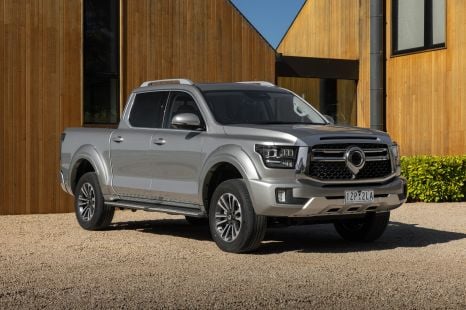

Marton Pettendy
9 Days Ago


Josh Nevett
8 Days Ago
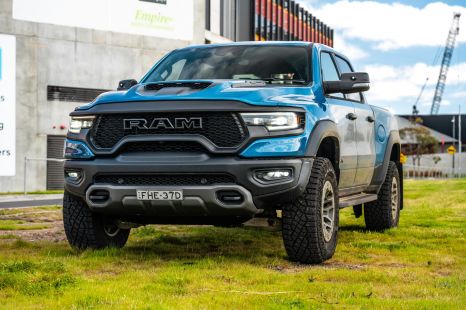

Max Davies
7 Days Ago